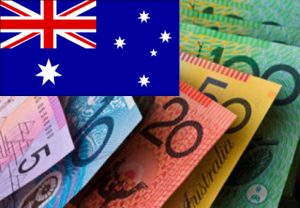Australian Dollar demand improves
14 October 2016 by News DeskAustralian Dollar demand had improved again by Thursday night as markets began to indulge in another session of risk-rallies.
 Australian Dollar trended bullishly on Friday after the publication of the Reserve Bank of Australia’s latest financial stability report, in which the bank played down housing risks slightly and stated that Chinese banks were a bigger risk than Australian ones, according to currency specialists TorFX
Australian Dollar trended bullishly on Friday after the publication of the Reserve Bank of Australia’s latest financial stability report, in which the bank played down housing risks slightly and stated that Chinese banks were a bigger risk than Australian ones, according to currency specialists TorFX
This was seen as hawkish as the bank continued indicating that it intends to leave monetary policy frozen for a while. By Friday morning, the Australian Dollar was trending at a new three-year-low.
New Zealand Dollar (NZD) – The Pound to New Zealand Dollar exchange rate began to slip on Friday morning as markets were taken in by another risk-rally thanks to market stability, while the New Zealand Dollar continued to recover from its selloff earlier in the week.
GBP NZD hit a new record-low on Friday morning after risk demand began to kick in. Hopes in the foreign exchange market that ‘safe’ US Presidential candidate Hillary Clinton would win the election next month were among the main reasons for yet another risk-rally.
Australian Dollar demand improves
Pound Sterling (GBP) – The Pound trended mostly flatly during Thursday’s trade session, hovering near levels of key support against major rivals like the US Dollar and the Euro as markets focused on the day’s UK headlines.
In what appeared to be the first genuine example of Sterling’s drop in value having a direct effect on British consumers, a row emerged on Thursday morning between retail chain Tesco and product supplier Unilever. Unilever – which sources ingredients from the US and deals in Euros – had intended to raise prices due to Sterling’s low value, but Tesco removed many Unilever items from its website in protest. These products include household names like Pot Noodle and Marmite.
By Thursday night the issue had been resolved, but it came as a reminder to both markets and consumers that, love it or hate it, Sterling’s low value is likely to impact an increasing number of things in the coming months.
US Dollar (USD) – The Pound to US Dollar exchange rate fluctuated during Thursday’s session, dipping in the morning before making a slight recovery in the evening. By Friday morning the pair had slipped once more and ‘Cable’ was trending closer to opening levels again.
Traders took a brief break from this week’s US Dollar rally on Thursday as poor Chinese trade data published on Thursday morning sent concerns about global growth into markets. However, ultimately bets of a Federal Reserve rate hike in December are as high as 70%, giving the US Dollar plenty of backbone, so it’s likely the ‘Greenback’ will end the week on a high note.
During Friday’s American session, markets will keep an eye on the day’s US advance retail sales scores for September, as well as the University of Michigan’s October confidence figures. If these scores disappoint the US Dollar could be weakened slightly, but it is unlikely GBP USD will recover this week’s losses.
Euro (EUR) – The Pound to Euro exchange rate trended relatively flatly throughout Thursday’s session and remained near these levels on Friday morning. The Euro saw a slight increase in demand later in the session thanks to a brief period of US Dollar weakness, but ultimately GBP EUR was unable to make any significant movement in either direction.
The day’s Eurozone news was also not able to offer the Euro much inspiration. Germany’s final September Consumer Price Index (CPI) score came in at 0.7% year-on-year, matching preliminary figures as expected.
Market focus will be on the European Central Bank (ECB) in the coming week. With the ECB due to hold its October meeting next Thursday, speculation is sure to increase on the possibility of the bank tapering its quantitative easing measures and returning to normalised policy. If this were to actually happen, the Euro would soar.
Canadian Dollar (CAD) – The Pound to Canadian Dollar exchange rate continued to slip on Friday after trending with a slight downward bias throughout Thursday.
While softer risk-sentiment and a dip in oil prices weighed on ‘Loonie’ sentiment on Thursday, the currency was able to make a more solid advance on Friday as oil prices continued to edge higher despite doubts on the effectiveness of OPEC oil output caps. As a result of this and stronger demand for risk-correlated currencies in the forex market, GBP CAD slipped closer towards this week’s lowest levels on Friday morning.
Disclaimer: This update is provided by TorFX, a leading foreign exchange broker, its content is authorised for reuse by affiliates.
Learn more about the Australian Dollar – Contact TorFX: Get A Quote
Want to live and work Down Under? Click here for expert help: Skilled Migration to Australia
Want to get a job Down Under? Click here for expert help: How to Get a Job in Australia
Click here for expert help with travel visas: Travel Visas to Australia
Click here for tourist information about Australia: Visit Australia


